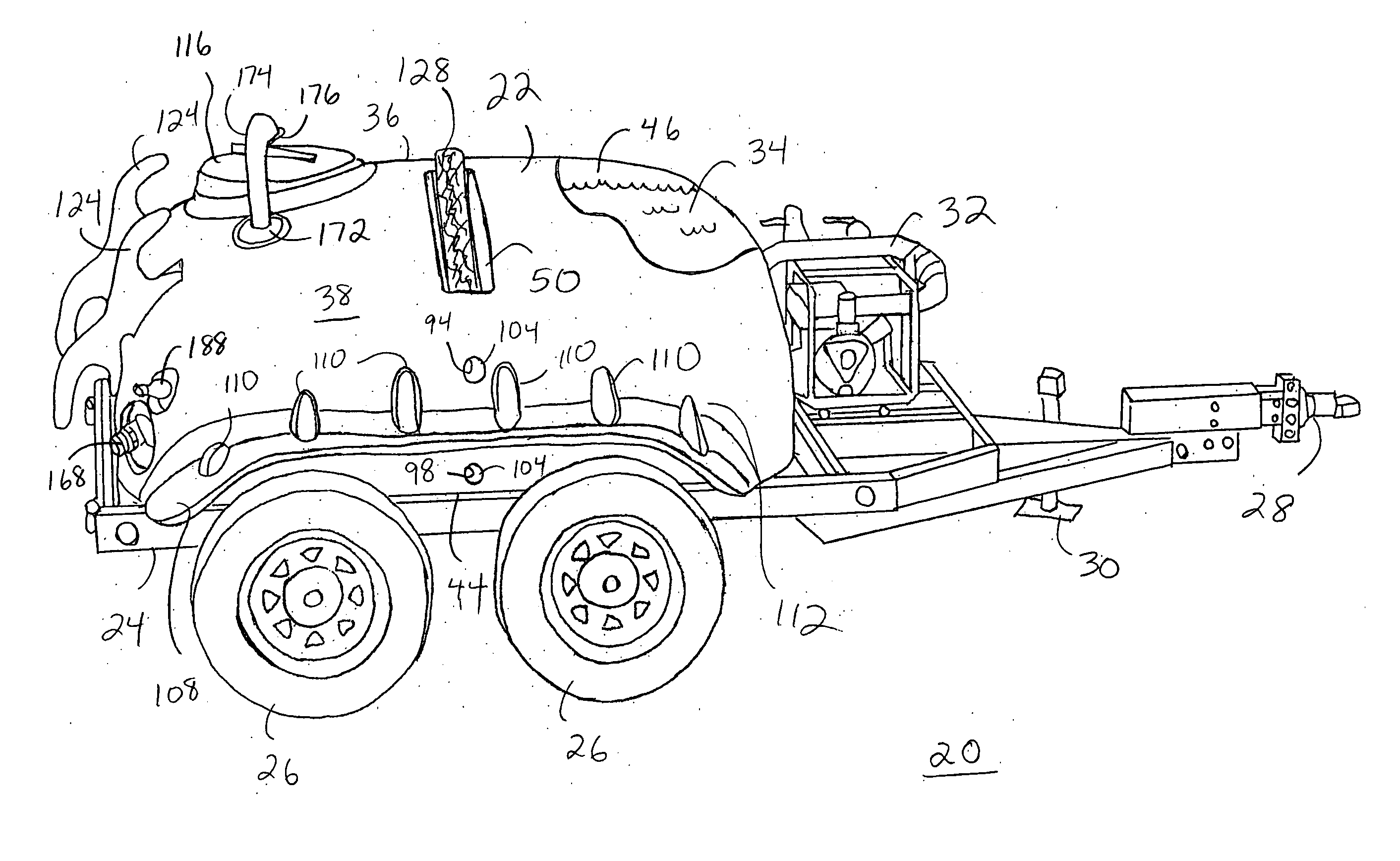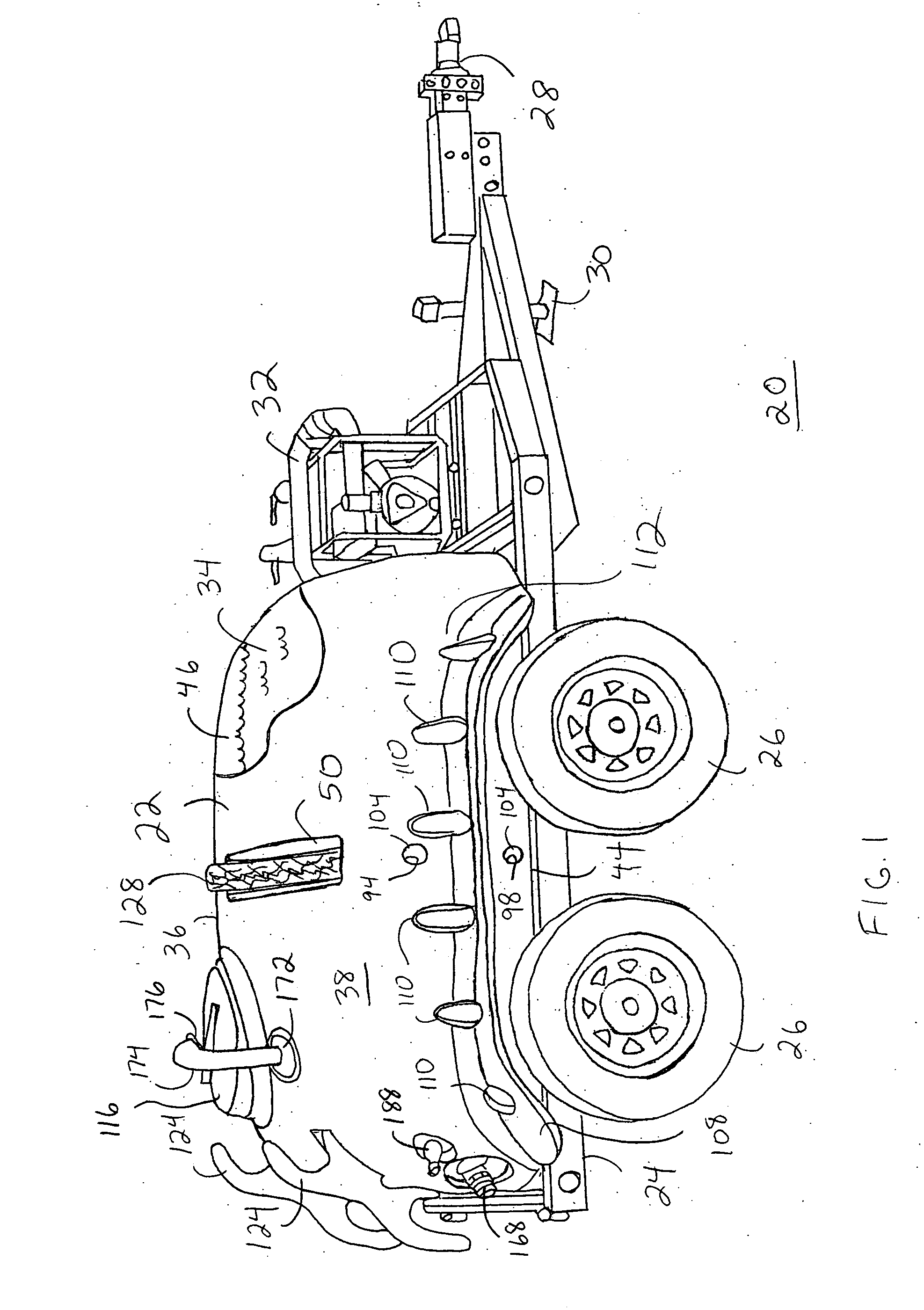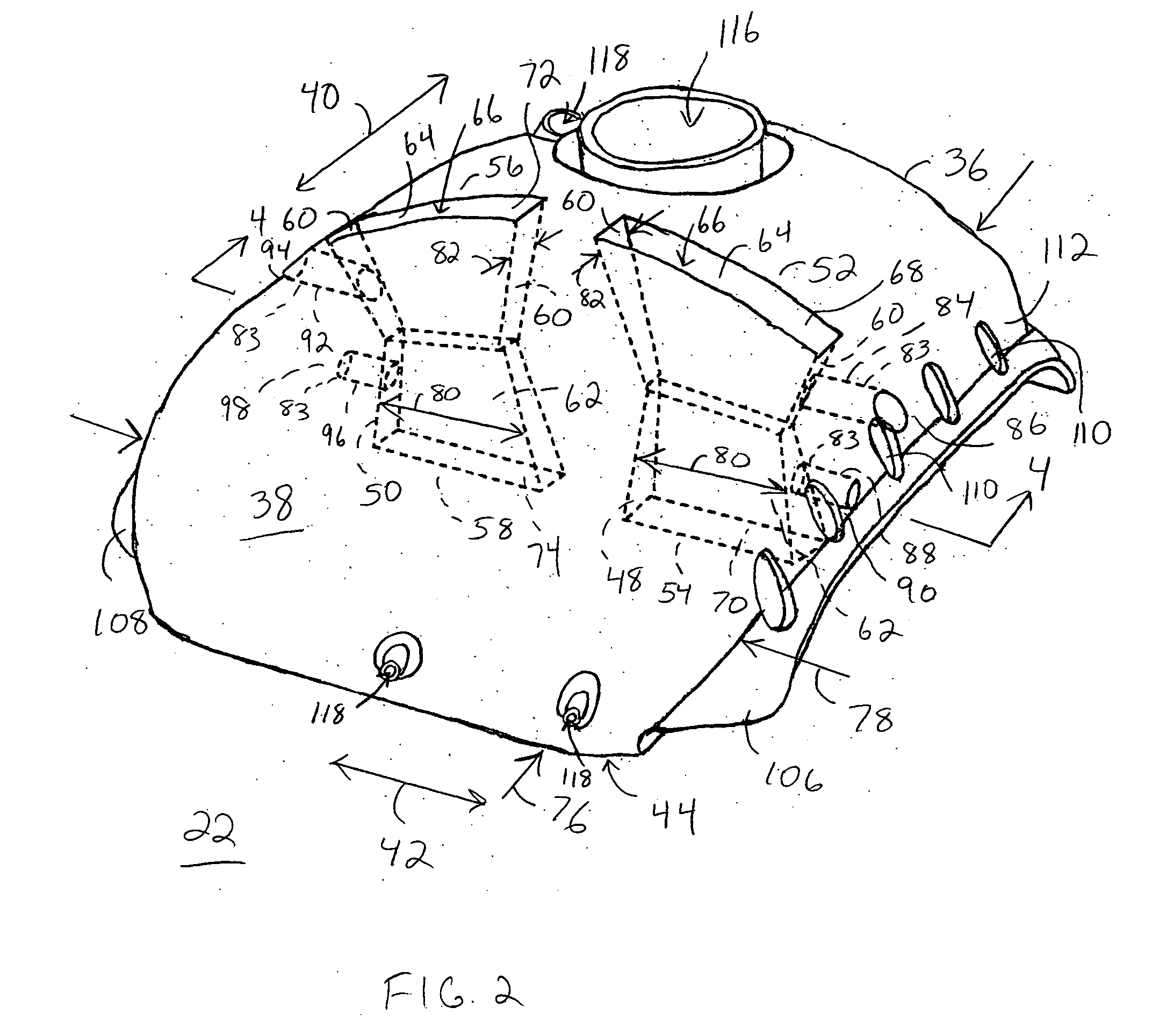Hollow structure formed by rotational molding and method of manufacturing same
a technology of rotating molding and hollow structure, which is applied in the direction of tank vehicles, transportation items, manufacturing tools, etc., can solve the problems of tank burst, adversely affecting the structural integrity of the tank, and tank movement, so as to limit the movement of liquid carried, simple and cost-effective manufacturing
- Summary
- Abstract
- Description
- Claims
- Application Information
AI Technical Summary
Benefits of technology
Problems solved by technology
Method used
Image
Examples
Embodiment Construction
[0030]FIG. 1 shows a side view of a liquid transport apparatus 20 including a hollow walled tank 22 in accordance with a preferred embodiment of the present invention. Apparatus 20 generally includes tank 22, a frame 24 supporting tank 22, and wheels 26 rotationally coupled to frame 24. Apparatus 20 may further include a hitch mechanism 28 for attachment to a towing vehicle (not shown), a jack stand 30 for retaining apparatus 20 approximately horizontal when apparatus 20 is not being towed, and a pump system 32 for pressurized delivery of a liquid 34, such as water, stored in tank 22. Thus, frame 24, wheels 26, and hitch mechanism 28 form a wheeled trailer to which tank 22 is attached for transport.
[0031] Tank 22 is a hollow walled structure formed from thermoplastic material, such as, polyethylene, polypropylene, acrylonitrile butadiene styrene (ABS), polyvinyl chloride (PVC), nylon, and the like. Tank 22 is manufactured utilizing a rotational molding process. A rotational molding...
PUM
| Property | Measurement | Unit |
|---|---|---|
| Volume | aaaaa | aaaaa |
| Length | aaaaa | aaaaa |
| Thickness | aaaaa | aaaaa |
Abstract
Description
Claims
Application Information
 Login to View More
Login to View More - R&D
- Intellectual Property
- Life Sciences
- Materials
- Tech Scout
- Unparalleled Data Quality
- Higher Quality Content
- 60% Fewer Hallucinations
Browse by: Latest US Patents, China's latest patents, Technical Efficacy Thesaurus, Application Domain, Technology Topic, Popular Technical Reports.
© 2025 PatSnap. All rights reserved.Legal|Privacy policy|Modern Slavery Act Transparency Statement|Sitemap|About US| Contact US: help@patsnap.com



